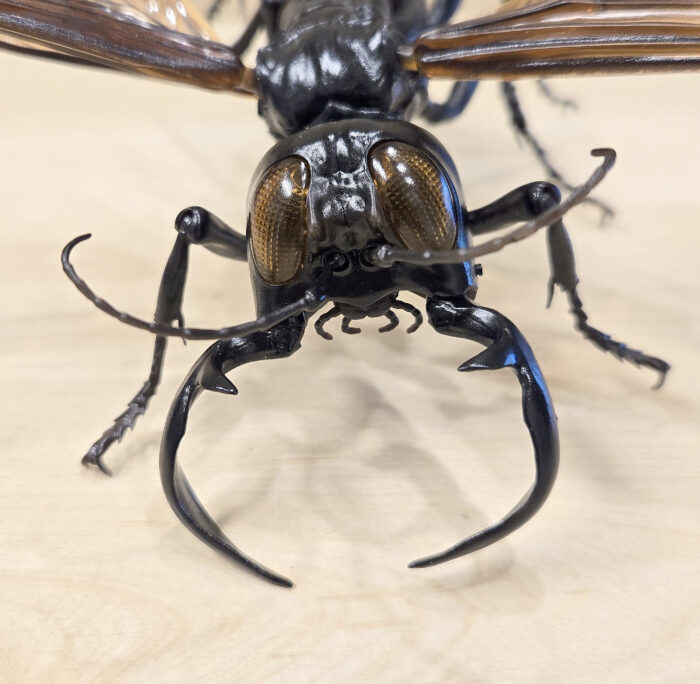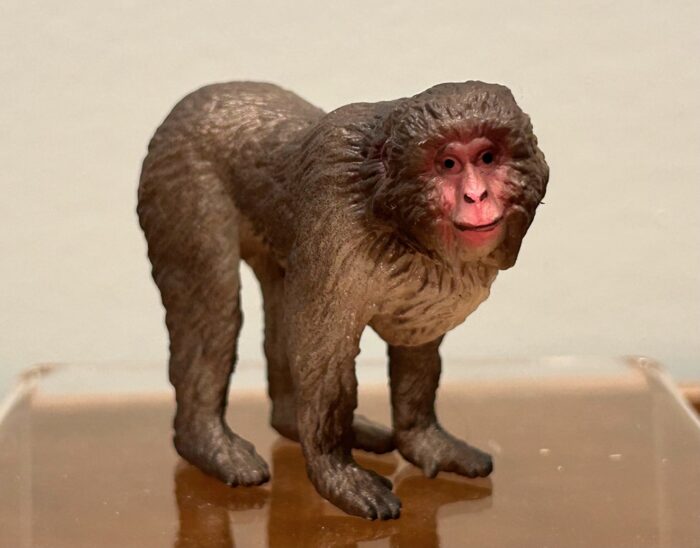Megalara garuda, commonly called the King of Wasps or Garuda wasp, was only formally described in 2012. It was named after the Hindu deity Garuda, the bird-like mount of the Hindu god Vishnu. This crabronid wasp is endemic to the Mekongga Mountains of the Indonesian island of Sulawesi.
Japanese Macaque (Wild Life Asia by Schleich)
Laugh and Grow Fat Sea Animals Series 1 (Animal Heavenly Body)

Review and images by JimoAi; edited by bmathison1972
Happy Shark Week! For a change, instead of reviewing a shark for this year, I will be reviewing a selected group of sea animals with a shark included, of course.
An introduction to Animal Heavenly Body. They are a Chinese company, akin to a mix of PNSO and Haolonggood with a hint of Popmart, which focuses on modern animals with some stylized features with them.
Rabbit Figurines Playset (Toymany)

Before I start this review, I must once again thank @Toymany-kenc and all our friends at Toymany for the donation of these review samples for the Blog. I had a keen interest in purchasing this set, so I was very happy to be able to get one for review!
The domestic rabbit is descended from the European rabbit (Oryctolagus cuniculus).
Asian Arowana (Monster Fish by Takara Tomy A.R.T.S.)

After recently discussing some Takara figures from a Monster Fish set (…the Fishing Wars) I thought I’d go into some others. So I am looking at the pair of Asian arowana figures from an earlier Takara Tomy series…also called Monster Fish (!?) but not fishing themed I guess? In fact the theme is pretty loose (the other two figures are deep sea fish…) I don’t actually have those other two, but I do like bonytongue figures.
Giant Pandas (Jungle Pandas Family Set by Toymany)
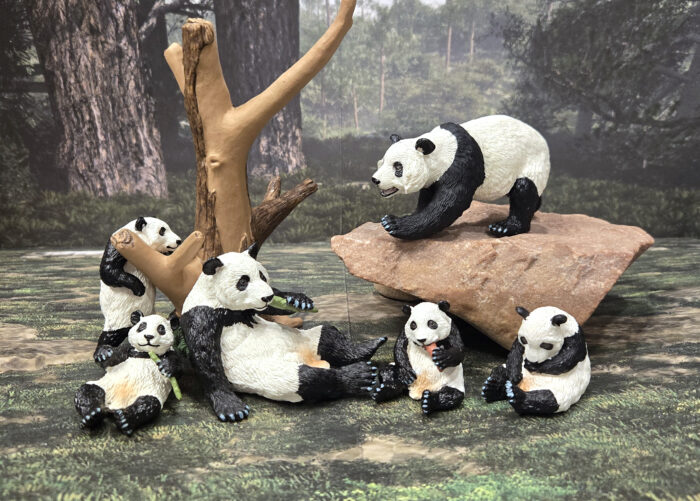
Before I start this review, I would like to thank @Toymany-kenc and the folks at Toymany for these review samples. We hope this is the start of a long and productive relationship between Toymany and the Animal Toy Forum and Animal Toy Blog!
The giant panda (Ailuropoda melanoleuca) is one of the most recognizable, familiar, and iconic animals on the planet.
Mini Crustaceans (Diversity of Life on Earth by Bandai)
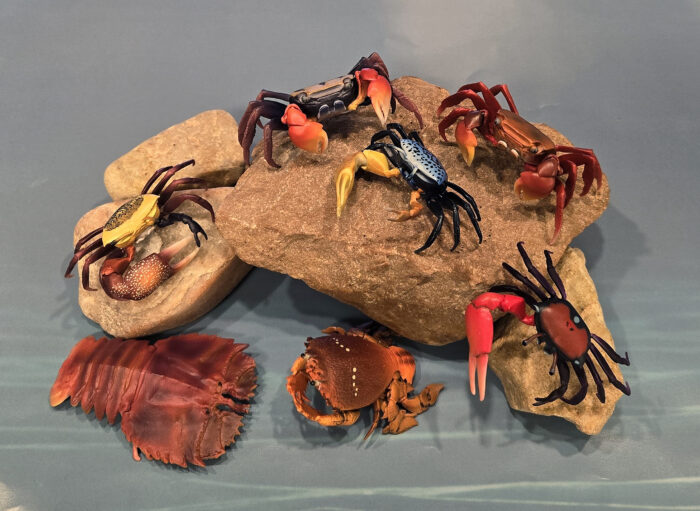
In early 2024, Bandai announced a set of seven miniature crustaceans in their ever-growing Diversity of Life on Earth line. I was must admit, I had mixed emotions for this set. Two of the figures I really wanted! For one of them, I go either way. And for the remaining four, I didn’t need or really want any of them.
Chinese Sturgeon (Mini Ancient Fish Series 2 by Bandai)
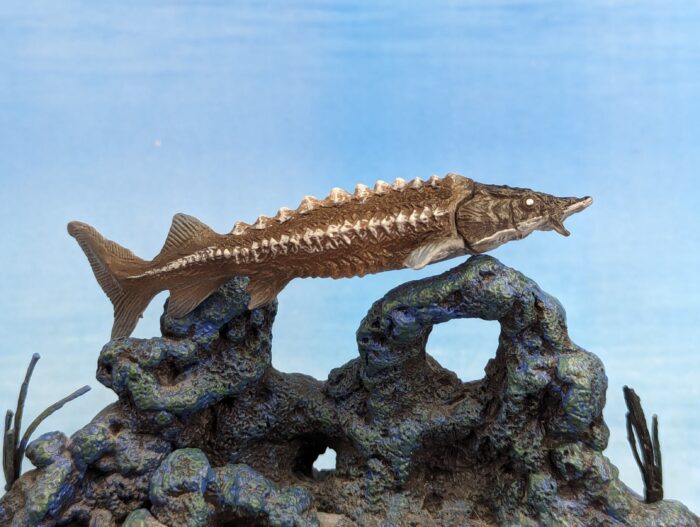
This figure represents the fifth and final model in the Mini Ancient Fish series 2 from Bandai. In this case, it a fish well-known as ‘ancient’, a Chinese sturgeon Acipenser sinensis. Sturgeons are well known as primitive fish, with the order Acipenseriformes represented in the Jurassic, and the earliest member of the sturgeon family Acipenseridae being known from the late Cretaceous, included in the same genus Acipenser (although it is believed that this genus is paraphyletic–so the taxonomy could change).
Crawlers (Pocket Explorers by Phidal Publishing Inc.)

Pocket Explorers is a line of books by put out by Phidal Publishing. They designed for children and are educationally driven. Looking at their website, the themes are Reptiles, Wild Cats, Dinosaurs, Sharks, Polar Animals, Birds of Prey, Bears, and Crawlers, the last of which we will be looking at today.
Grass Puffer (Freshwater Fishes Book 2, first AND second release by Yujin)
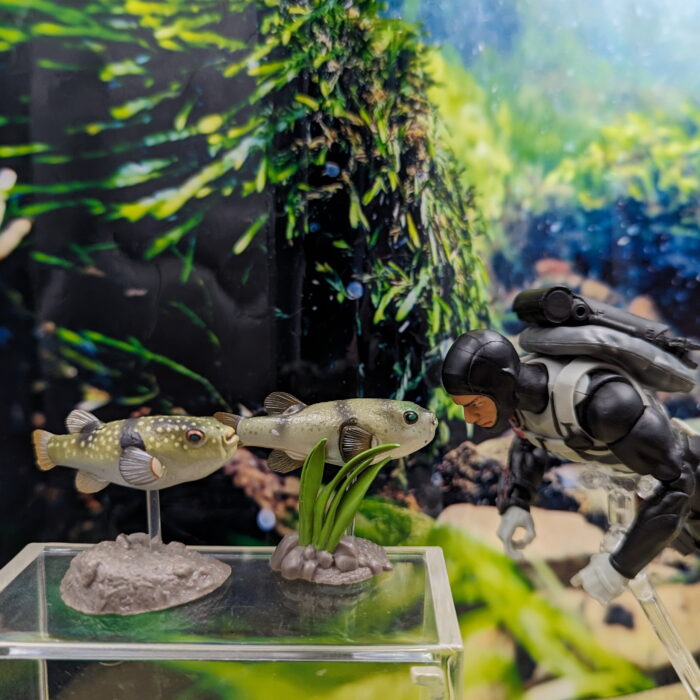
This figure is the grass puffer (AKA Sunafugu, meaning sand puffer in Japanese), Takifugu niphobles, model 30 and number 15 from the second series. This is the only pufferfish in the whole series, a family of immediately recognizable fish well-known for taking in air or water to make themselves much larger, as a defense mechanism.
Eagle Nest with Babies (Wild Life America by Schleich)

The bald eagle (Haliaeetus leucocephalus) and the golden eagle (Aquila chrysaetos) are not closely related, at least not within the context of the family Accipitridae. The latter is considered a ‘true’ eagle whereas the former is a buteonine hawk. Yet, the two birds have similar breeding and nesting habits.
Barred Mudskipper (Freshwater Fishes Book 2, first AND second release by Yujin)

This figure is the Barred Mudskipper, Periophthalmus argentilineatus (also called the silver-lined mudskipper, which is literally the species name), model 29 and number 14 from the second series. Once again, I eventually got my hands on both versions, with the second release first. This is the second Yujin goby, this time as the representative of the mudskipper subfamily (Oxudercinae, family Gobiidae) in the series.

